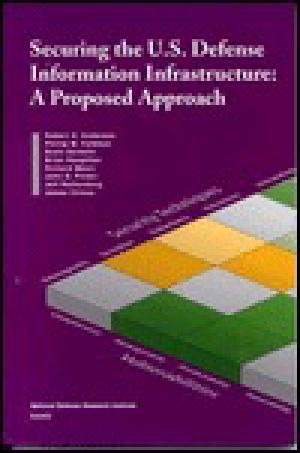Securing U.S. Defense Information Infrastructure · A Proposed Approach

- Authors
- Anderson, Robert H. & Anderson, Robert & Rothenberg, Jeff & Mesic, Richard & Chiesa, James & Gerwehr, Scott & Feldman, Phillip & Houghton, Brian & Pinder…less, John D.
- Publisher
- RAND Corporation
- Tags
- test
- ISBN
- 9780833027139
- Date
- 1999-07-13T00:00:00+00:00
- Size
- 0.78 MB
- Lang
- en
It is widely believed, and increasingly documented, that the United States is vulnerable to various types of information warfare attacks. Threats range from nuisance attacks by hackers to those potentially putting national security at risk. The latter might include attacks on essential U.S. information systems in a major regional crisis or theater war. The purpose might be to deter (or coerce) a U.S. intervention, to degrade U.S. power projection capabilities, to punish the United States or its allies, or to undermine the support of the American public for the conflict. Critical command-and-control and intelligence systems are designed to be robust and secure under attack. However, their survivability cannot be taken for granted, and they depend on a diverse, primarily civilian and commercial, information infrastructure (consisting of the Internet and the public telephone network, among other elements). As the diversity and potential seriousness of threats to the U.S. information infrastructure have become apparent, national-security planners and analysts have begun to think of ways to counter such threats--to increase the infrastructure's availability for essential functions. The authors analyze the concept of a minimum essential information infrastructure (MEII) in light of the characteristics of the national information infrastructure and the nature of the threat. They suggest that it is useful to think of the MEII as a process rather than a hardened stand-alone structure, and they provide a methodology and a tool to support the implementation of that process by military units and other organizations.